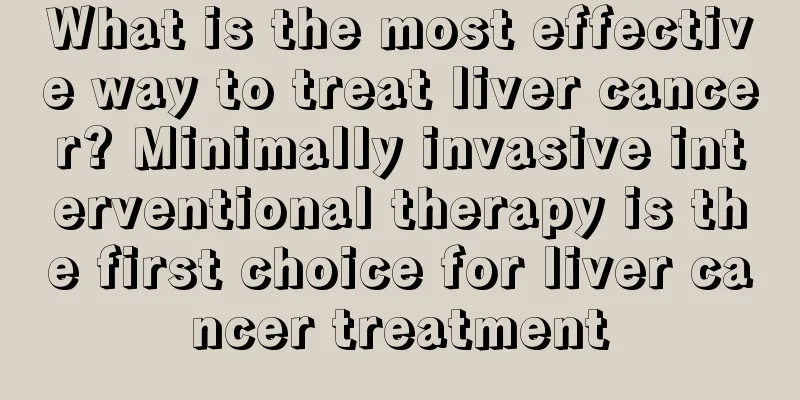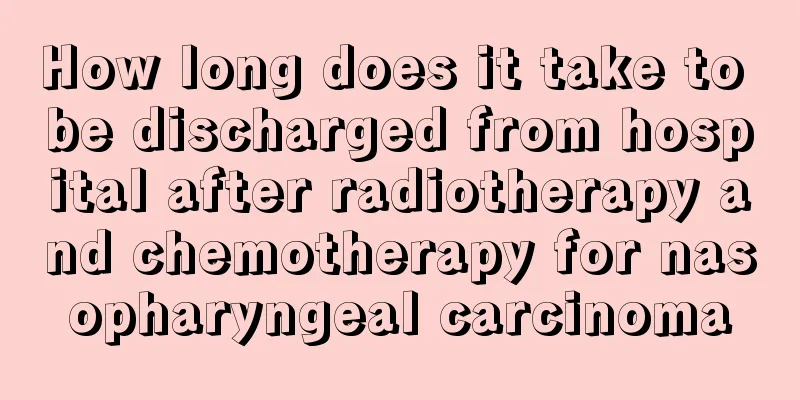What is the most effective way to treat liver cancer? Minimally invasive interventional therapy is the first choice for liver cancer treatment

|
Liver cancer is one of the common malignant tumors. The incidence of liver cancer is closely related to chronic hepatitis (hepatitis B), and is also related to aflatoxin, nitrosamines, parasitic infections, environmental pollution, genetic factors, etc. Symptoms of liver cancer may include: pain and swelling in the liver area, enlarged liver, loss of appetite, nausea, vomiting, jaundice, weight loss, etc. Common treatments for liver cancer include surgery, radiotherapy, chemotherapy, and traditional Chinese medicine. The early symptoms of liver cancer are not obvious. Generally, patients with liver cancer are discovered in the middle and late stages of liver cancer. At present, in our country, interventional therapy has become the preferred method for the treatment of middle and late stage liver cancer (especially patients who have lost the opportunity for surgical operation) because of its minimally invasive and high efficiency, and has been well received by patients. Interventional treatment of liver cancer has the following advantages: 8 significant advantages and reasons for choosing interventional treatment for liver cancer 1. Local anesthesia: no general anesthesia is required, so there is no system interference and general anesthesia risk; 2. Small trauma: skin wounds can be ignored and patients suffer less pain; 3. Strong repeatability: It is not limited by the metabolic cycle of tumor cells. According to the condition and treatment needs, it can be used in stages, multiple times, and repeatedly to treat multiple or recurring tumor nodules; 4. Real-time efficacy evaluation: Under the monitoring of modern imaging equipment (DSA), the objective efficacy of various treatment methods can be accurately evaluated in real time and in the most effective way; 5. Small side effects: small dosage, high local drug concentration, no drug resistance problem, and small side effects; 6. Strong targeting: precise positioning, precise treatment, direct cutting off of tumor blood supply, “starving” tumor cells to death, with minimal damage to normal tissues; 7. Quick recovery: patients can usually move normally 12 hours after surgery and be discharged from the hospital in 4-5 days; 8. Significant therapeutic effect: After interventional treatment, the patient's survival time is prolonged and the quality of life is significantly improved. |
<<: What are the symptoms of lung cancer? Introduction to 3 symptoms of lung cancer
Recommend
Can the tongue coating be scraped
The tongue is not as simple as it seems. It is co...
What are the effects of compound polysaccharides
Complex polysaccharides are mainly carbohydrates ...
Methods for identifying gastric cancer
If gastric cancer occurs, the patient will usuall...
How many days after ovulation does it take for implantation to occur?
The method of calculating the ovulation period is...
What is the cause of right shoulder pain
What causes right shoulder pain? People with bad ...
Is acupuncture and thread embedding effective for weight loss?
Many people have tried all kinds of methods to lo...
How to reduce the swelling of a big bump on the forehead
The forehead is also a very important piece of sk...
Is ginger useful for oily hair loss?
In normal times, the treatments for oily hair los...
Can synovitis be treated with physical therapy?
Physical therapy is becoming more and more widely...
What are the symptoms of salt poisoning
In life, we always emphasize that we must be care...
How should I take care of myself if I have liver cancer? What are the common symptoms of liver cancer?
How should we take care of liver cancer in daily ...
Can sesame paste be eaten on an empty stomach? What are the benefits of sesame paste?
The pace of life is very fast nowadays, especiall...
Deciphering the various "legends" about "beer and MSG"
There are too many rumors on the Internet about w...
What is the difference between nerves and meridians?
The structure of the human nervous system is very...
How much formaldehyde is enough to live in
If you have just purchased a new house, you canno...









